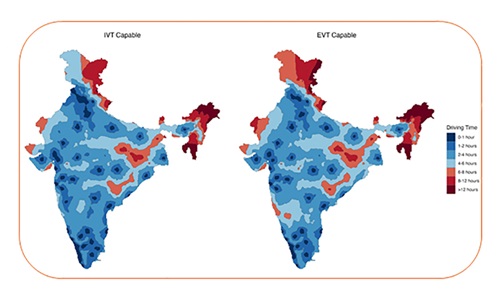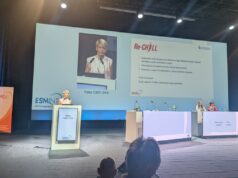
A comprehensive, geospatial analysis of acute ischaemic stroke care in India has identified “critical disparities” in access to life-saving reperfusion treatments, revealing that only 26.3% of the country’s population has access to an intravenous thrombolysis (IVT)-capable centre within an hour’s drive, while just 20.6% can reach endovascular therapy (EVT)-capable centres in the same timeframe.
This research—now published in the International Journal of Stroke—stems from a “landmark” collaboration between the Society of Vascular and Interventional Neurology (SVIN) Mission Thrombectomy initiative, and the comprehensive stroke programme and Achutha Menon Centre for Health Science Studies (AMCHSS) of Sree Chitra Tirunal Institute for Medical Sciences and Technology (SCTIMST) in Thiruvananthapuram, India.
“Stroke is a leading cause of death and disability worldwide, yet access to timely care remains alarmingly limited in low- and middle-income countries,” said Kaiz Asif (Ascension Health/University of Illinois, Chicago, USA), who conceptualised the study and is also the global vice-chair of the Mission Thrombectomy initiative. “This study sheds light on these disparities and provides actionable data to drive systemic improvements in stroke care delivery across India.”
A recent press release announcing the findings states that regional disparities are “stark”, with the southern portion of India having significantly better IVT and EVT access as compared to the northeast, where median driving times exceed seven hours. These findings highlight the “urgent need” for targeted resource allocation and infrastructure development to address current inequities, the release adds.
At the time the analyses were conducted, Mission Thrombectomy—an initiative to address global inequities in stroke care, with a particular focus on access to EVT—was chaired by Dileep Yavagal (University of Miami, Coral Gables, USA). The study’s design and analysis were conducted by the data science team at AMCHSS, led by Biju Soman (SCTIMST, Thiruvananthapuram, India) and Arun Mitra (All India Institute of Medical Sciences [AIIMS], Hyderabad, India), in collaboration with P N Sylaja (SCTIMST, Thiruvananthapuram, India)—the national co-chair of Mission Thrombectomy in India.
The study’s findings have “far-reaching implications” for India’s public health policy, healthcare infrastructure planning, and workforce development, the release continues, also noting that the methodology used in this study—geospatial analysis—has applications beyond stroke care.
“These robust methods can be used to analyse access disparities for other conditions, including communicable diseases,” said Mitra. “Additionally, we plan to extend our research to detailed state- and district-level analyses, which will offer granular insights to further inform healthcare planning.”
“This study not only highlights disparities but also provides a roadmap for addressing health equity through targeted resource allocation and policy reforms,” Soman commented. “We hope our work will inspire healthcare policymakers, healthcare providers, and fellow researchers, to embrace the role of data science in addressing these challenges.”
The study also sets a precedent for similar analyses in other low- and middle-income countries facing comparable challenges, according to Sylaja.
“These data reinforce the urgent need to have more primary and comprehensive stroke care units in India so that timely revascularisation therapies will be available to all patients, thereby reducing the disability due to stroke,” she said.
The authors hope that, ultimately, their work will serve as a call to action for healthcare policymakers, providers and industry stakeholders to “bridge the gaps” in stroke care access, and inspire further collaborations to address global healthcare disparities.










